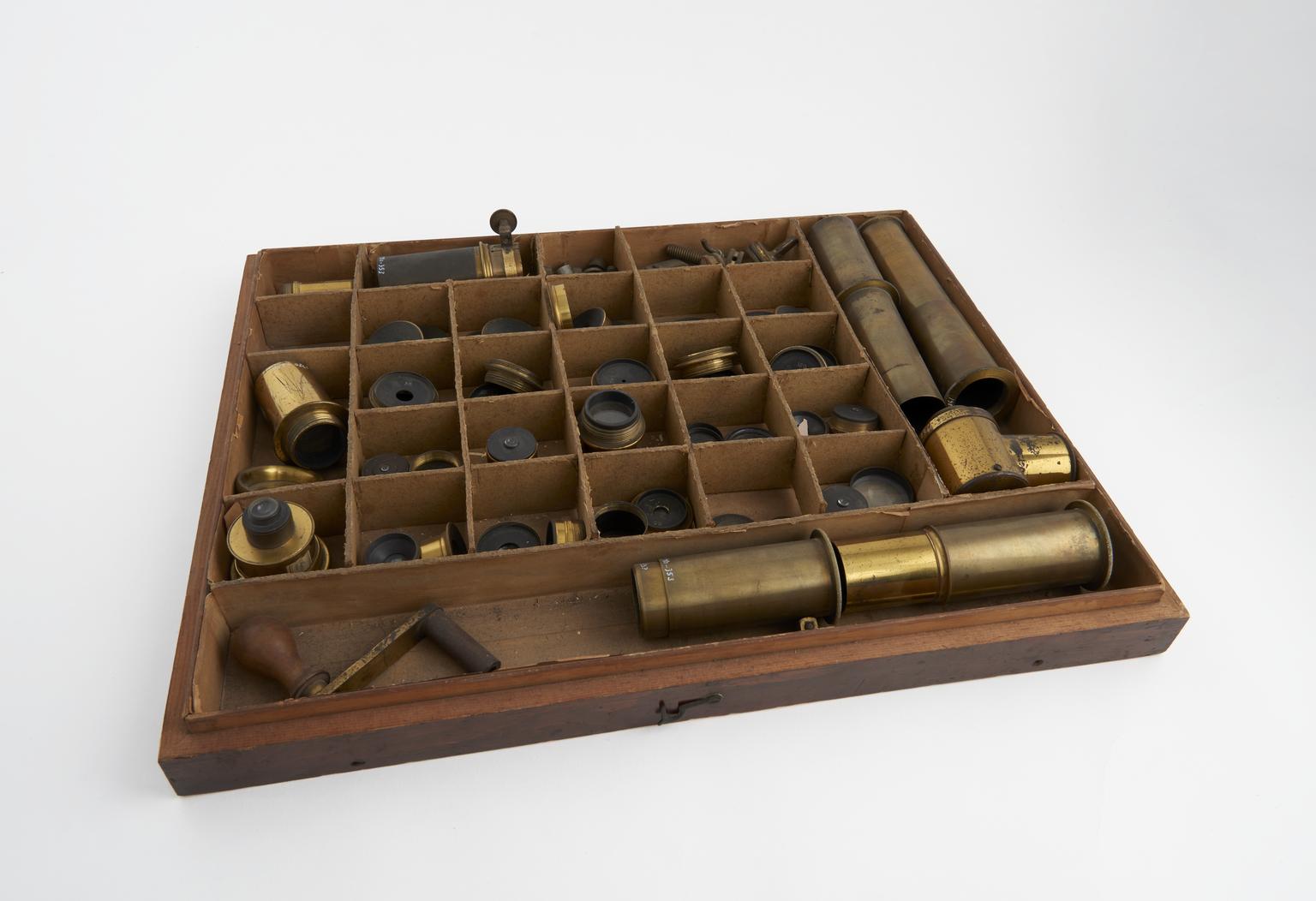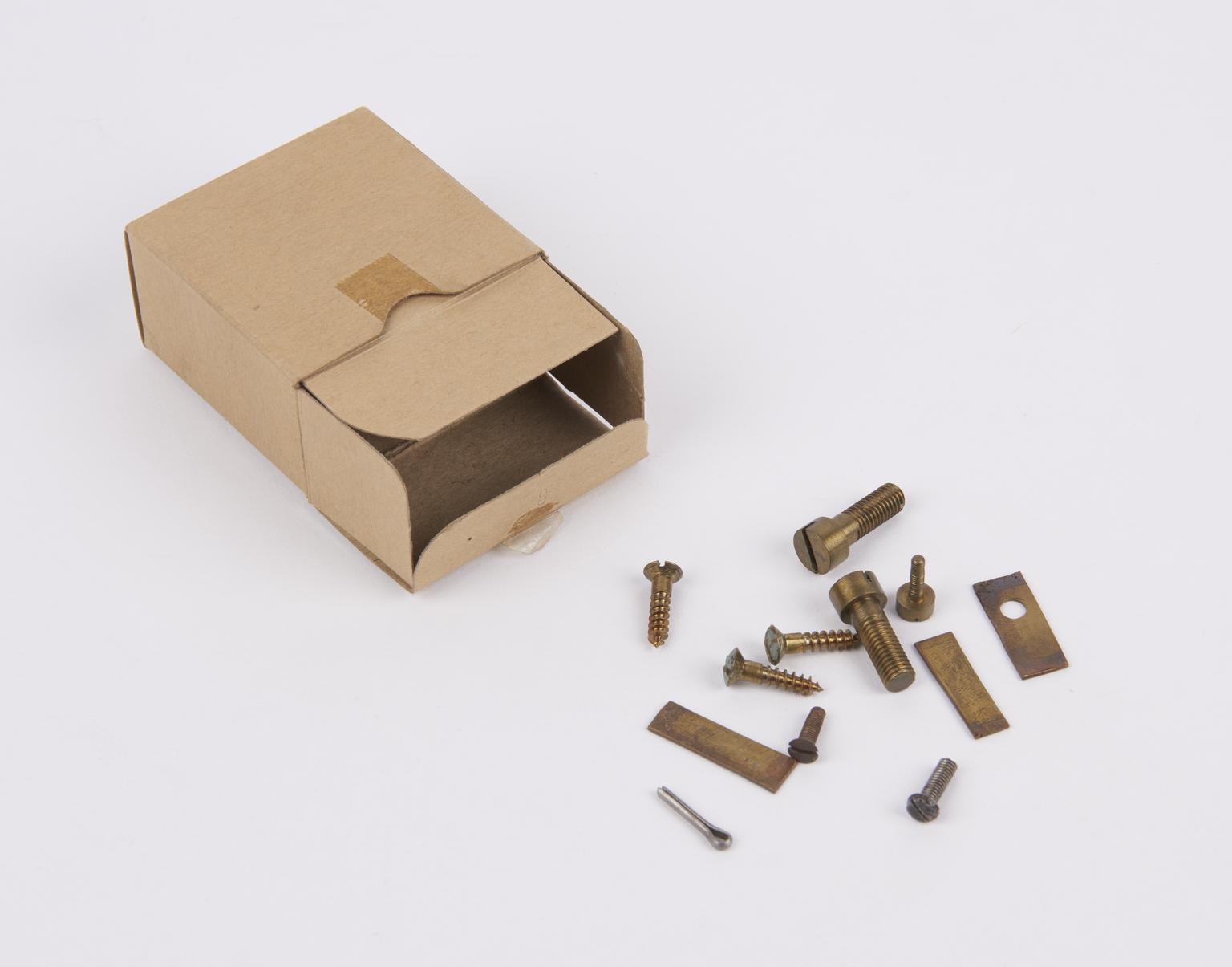
Case for refracting telescope by Wray.
Case for refracting telescope by Wray.
- Materials:
- wood
- Object Number:
- 1980-353 Pt1
- type:
- components , storage boxes and instruments
- Image ©
- The Board of Trustees of the Science Museum
Telescope by Wray, c 1875, complete on equatorial mounting with box of accessories and case.
Wray was a Solicitor, then optician, amateur astronomer then photographic lens manufacturer. His interest and the products he made reflected the growing Victorian interest. He made telescopes from 1850.
Unlike his predecessors, Wray’s objects were made and promoted for the use of amateurs, in their homes. He then leveraged his reputation as an esteemed astronomical optician to begin making photographic lenses from 1880 onwards. After his death, Wray (Optical Works) Ltd, the company that evolved from William Wray’s original business, continued making photographic lenses and cameras until 1971.
Wray became famous for the quality of his astronomical equipment. He won a prize in 1862 at the Great International Exhibition for his lens finder, on the 20-inch Buckingham telescope, one of the two largest working refracting telescopes in the world at the time.
It is likely that the barrel and pier for this telescope were made by other manufactures and then rebadged by Wray. The brand Wray was then used for the telescope in its entirety as the company to have sold it. For this telescope J. H. Steward contributed the governor.

Case for refracting telescope by Wray.

Box containing eyepieces and other accessories for refracting telescope by Wray
Adjustment and screws for telescope by Wray, c 1875.
Adjustment for telescope by Wray, c 1875. Made in London.

Adjustment screws for telescope by Wray, c 1875.
A large refracting telescope by Wray, London, with sighting tube and rosewood adjustment rods, green painted barrel, lens, and eyepiece, mounted on an iron stand.
Whilst it is claimed Wray did not develop any new concepts, he refined the quality of telescope lenses ‘within the already consecrated designs of his time’ to an extremely high quality. For example, he claimed to have removed all traces of chromatic abbreviation from object-glass – ‘achromatised’ glass – by using light instead of dense flint, which reduced the ‘secondary spectrum’. Thus, as Wray noted in an article in the Monthly Notices of the Royal Astronomical Society (Vol. XXVII, 11 January 1867 No. 3 pp85-87), his achromatised glass allowed ‘a perfectly achromatic image of the Moon and planets, which are shown in a surprisingly sharp and clear manner on the black ground of the sky’.
Pilar for refracting telescope by Wray, c 1875.
Pilar for refracting telescope by Wray, c 1875.
Pilar for refracting telescope by Wray, c 1875.